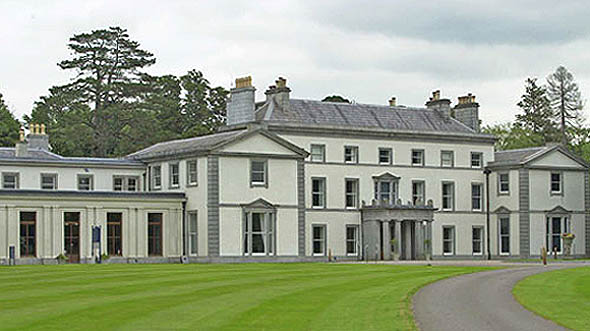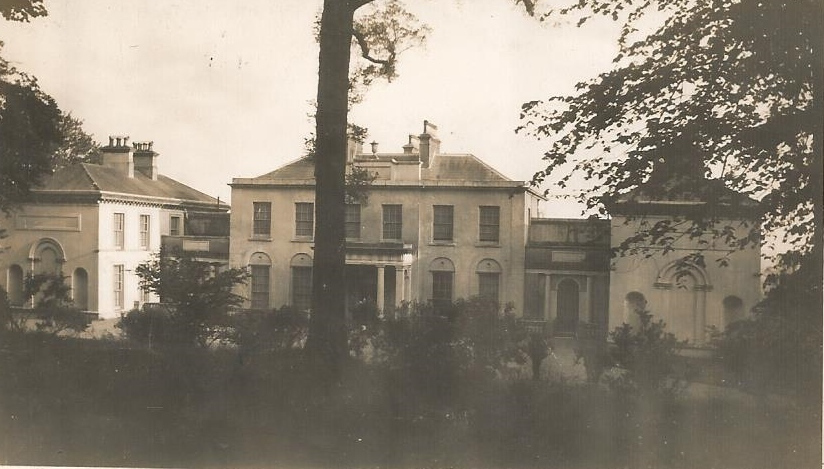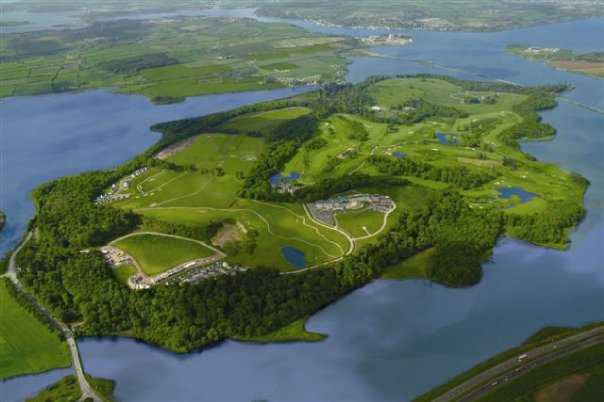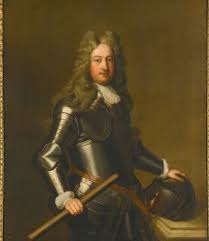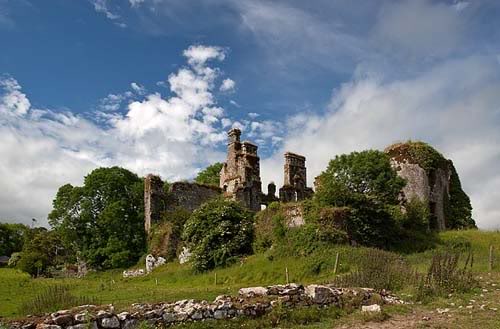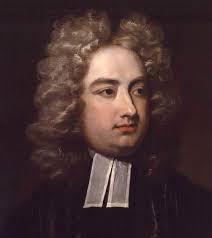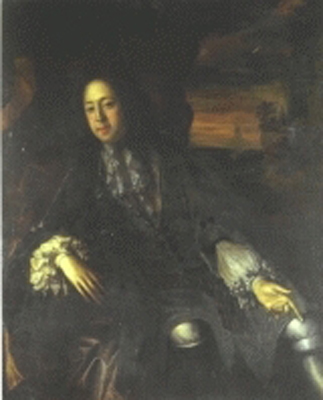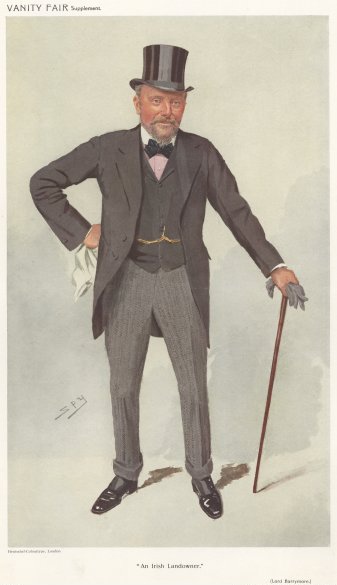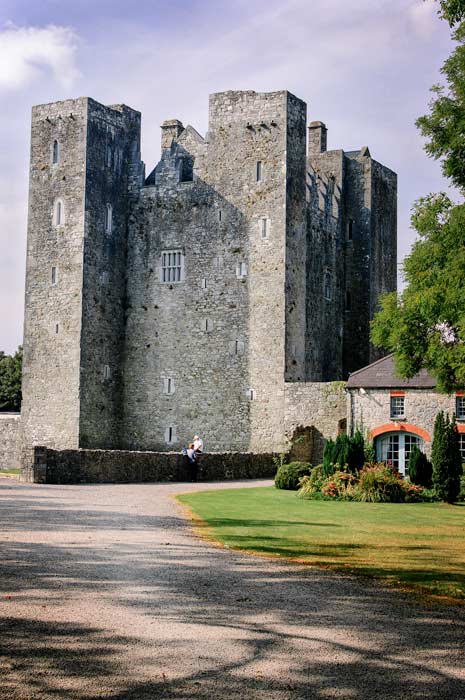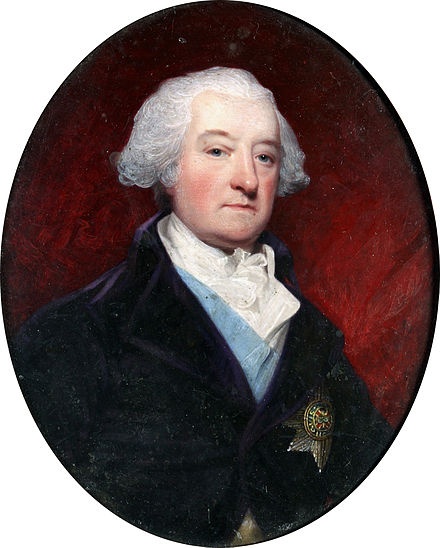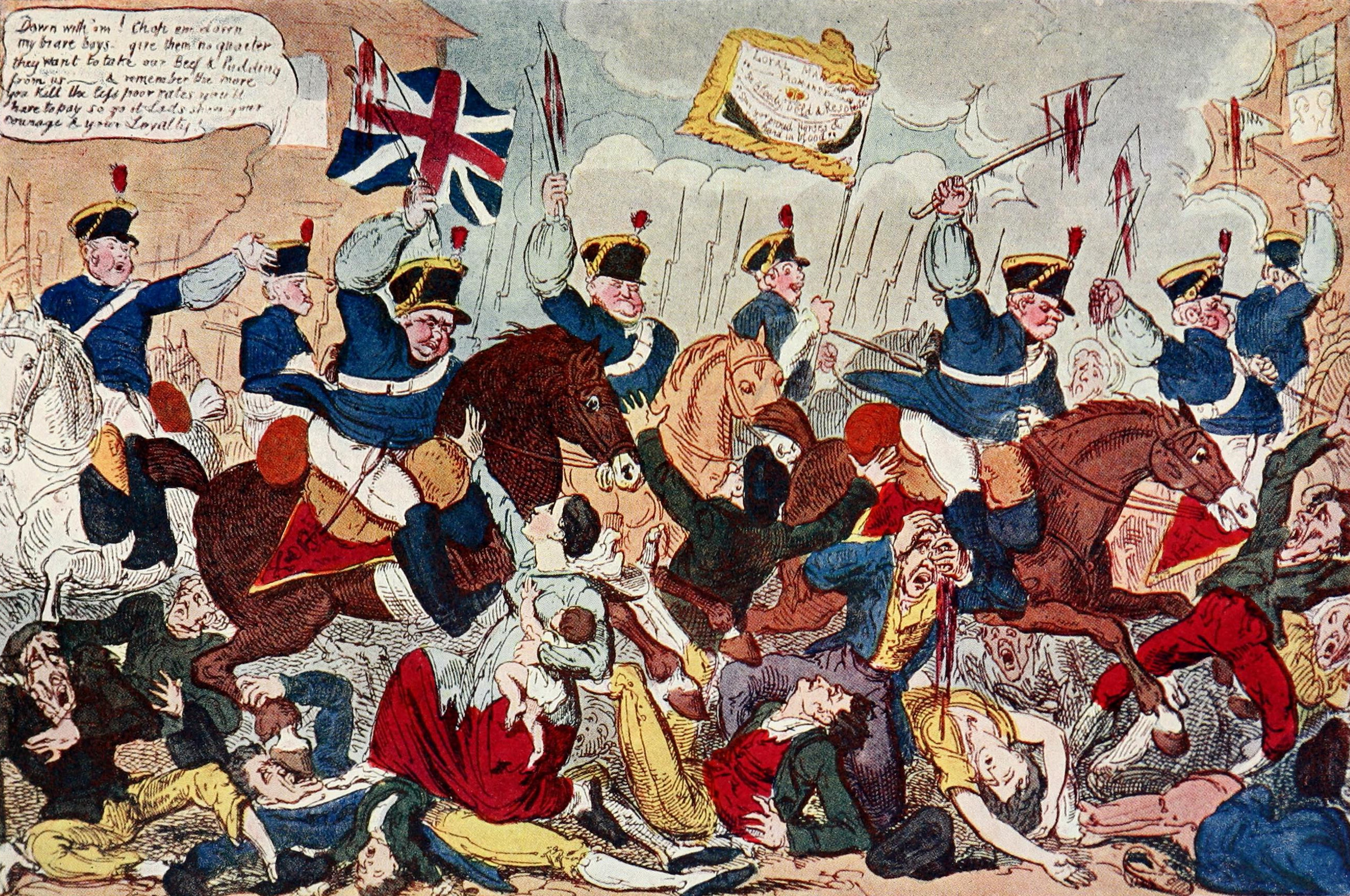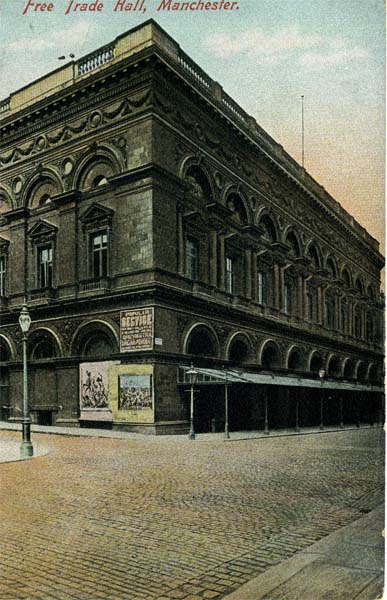Pauline Roche (1835 -1894) has been part of the story for a while. But I’m becoming increasingly sure that she helps place a lot of things into context. This is one of a series of posts covering her marriage into the Barry family, and her daughter’s marriage into the related Smith-Barrys, and a look at where they all fit into both Irish, and British society.
Pauline & William Henry Barry had seven children, five of whom were unmarried, only two of the girls marry. Their children were:
- (Patrick) Henry, born 1862; d. poss 1930, who appears to have been unmarried
- William Gerard; born 1864; d. 1940 in Saint-Jean-de-Luz, unmarried.
- Pauline; prob born 1865 or b.1867 – d. after 1911; unmarried.
- Edith,born probably 1866, but possibly as early as 1861, and possibly 1863. Edith and Mary both give their ages as 35 in the 1901 census so it’s likely they are twins.
- Mary Barry, b. 1866, married Cecil Smith Barry, (b. 19 Oct 1863, d. 21 Nov 1908) so Cecil was Pauline Roche’s son-in-law.
- Henrietta (Rose) , b. 1873/4,unmarried
- Kate. b 1879 unmarried.
Edith marries twice, and has three sons with her first husband; William, and Joseph b. 1891 who are twins, and then Gerard b. 1893, a year later,, and a daughter, Janet b. 1905, with her second.
Mary married Cecil Smith Barry, and had two daughters Cecily Nina b 1896, and Edith b 1907
So the grandchildren are:
- William Hayes 1891 – 1918, aged 27
- J B (Joseph Barry )Hayes 1891-1927, aged 36
- Gerard Patrick Hayes 1892 – 19??
- Cecily Nina Smith-Barry b 1896
- Janet Babtie b 1905;
- Edith Smith-Barry b 1907
Edith married Patrick Aloysius Hayes (1847-1900) who was born in Dingle, Co Kerry in 1847, and was a surgeon-major H. M. Army Medical Department, and they had three sons; William Hayes 1891 – 1918, J B (Joseph Barry )Haynes 1891 – 1927, and Gerard Patrick Hayes. Will and Joe appear to be twins, according to the 1901 census, both aged 9, Gerry is a year younger at 8, so probably born in 1892. Patrick Hayes Senior died in Wimbledon on the 20th March 1900. Edith then married Lieutenant General William Babtie V.C (1859 -1920), as a widow in 1903, and had a daughter Janet born in 1905.
Edith died on 25th June 1936 at 18 St Patrick’s Place, Cork and her address was given as The Hermitage, Rushbrooke, Cork; probate was given to Gerard Patrick Hayes, who described himself as an advertising salesman.
Mary and Cecil Smith-Barry had two daughters, Cecily Nina b 1896, and Edith b 1907. Cecily died in Bournemouth in the winter of 1954, “aged 56” actually 58. By that point she was firmly calling herself Nina Cecily. She was entered on the General Register of Nurses on Feb 16 1923, and still on the register in 1940, where her address was given as 9 Walkers Row, Fermoy, co. Cork. 1937 her address was Ruddiford, Wimborne Road, Red Hill, Bournemouth. She got her nursing certificate between 1917-1920 at St George’s in London. By 1943 she was at 3 Bodorgan Road, Bournemouth. There is very little trace of Edith Smith-Barry to date.
All three of Edith’s sons served in the First War, both Will and Joe in the Queen’s (Royal West Surrey) Regiment, and Gerard in the Royal Fusiliers.
Will was awarded a D.S.O. (Distinguished Service Order), and Joe a M.C. (Military Cross). The D.S.O. is awarded for an act of meritorious or distinguished service in wartime and usually when under fire or in the presence of the enemy. The Military Cross is a decoration for gallantry during active operations in the presence of the enemy. The decorations rank two, and three, respectively, in the order of precedence behind the Victoria Cross, which, incidentally, was awarded to their step-father Lieut.-General Sir William Babtie during the Boer War.
William Hayes died of flu on the 20th October, 1918, in Italy, and is buried at Staglieno Cemetery, Genoa. He had served throughout the First War, having been part of the original Expeditionary Force in 1914; out of the 1,000 men of 1st Battalion The Queen’s Royal Regiment who landed in France in 1914, only 17 were alive at the Armistice. So Will almost made it.
Gerard was wounded in 1916, when he was also mentioned in dispatches by Sir Douglas Haig, and Joe was awarded the Military Cross the same year. Will was mentioned in dispatches, and awarded the D.S.O. in 1917.
Joe survived the war, but died on December the 19th, 1927, aged 35. He had married in the winter of 1920, and his widow Gwen [nee Harold] survived him, and died almost fifty years later in 1976. Their address was given as the Very House, Worplesdon, Surrey, when Gerard Patrick was granted probate. Joe left £ 226. 13s. 11d., a present day equivalent of about £ 66,000.
Pauline Barry died in the autumn of 1894, aged 56. The registration district was Midletown, in co. Cork, so we can safely assume that she died at home in Ballyadam. All three of her grandsons had been born before she died, but none of her granddaughters.
Patrick Hayes died at Wimbledon on the 20th March 1900, presumably at 132 Worple Road Wimbledon where the boys were living at the time of the census in 1901. The house itself appears to be a relatively small two storey late Victorian semi-detached house. The greatest curiosity is that, at the time of the 1901 census, all three boys were living there without their mother, and only three servants looking after them. Elizabeth O’Shea aged 30, described as a nurse domestic on the census, but presumably their nanny; and Mary Phillips, a 21 year-old house maid, and Violet Gatling, also 21, who was the cook. The census was taken ten days before Will, and Joe’s tenth birthday on the 11th of April.
The censuses in 1901 in both Ireland, and England were taken on the same day 31st March, though the forms in Midleton in Ireland were not filled in until the 12th April 1901. They show that Edith Hayes was in Ireland staying with the Coppinger family at Midleton Lodge, rather than with her brother and sisters at Ballyadam House, nearby. There could be any number of reasons for this, Pauline, and Rose Barry are both living at Ballyadam with only one servant, in a sixteen room house outside of town, whereas the Coppingers are in the middle of Midleton in a rather larger house, with four daughters aged between eleven and twenty-one, a governess, and seven servants. Quite simply, it may well be that life at Midleton Lodge was a bit livelier, and as the widowed mother of three youngish sons Edith was looking for a rest, and some adult company. In all likelyhood, the Coppingers were also likely to be cousins of some sort.
Both families, the Barrys, and the Coppingers were living in considerable comfort, compared to the majority of the population of Ireland at the time. The Coppinger house appeared to have 22 rooms, and 20 outbuildings including 6 stables, a coach house, harness room, three cow houses, a calf house, dairy, piggery, fowl house, boiling house, barn, and a workshop, shed, and store. The house had “16 windows at the front” , in fact from the look of it, five windows at the front in a good solid double fronted Georgian house that is now the local council offices. Just to give some idea of how mobile all the families were Thomas Stephen Coppinger says in the 1901 census that he was a 57 year old merchant, born in Lucca, Italy in 1842.
Ballyadam, by contrast, was marginally smaller with 16 rooms, and 9 stables, a coach house, a harness room, 2 cow houses, a calf house, 2 piggeries, a fowl house, boiling house, barn, potato house, and 2 sheds. The Barrys were also listed as the owners of two 2-room cottages, each with 2 outbuildings next door to Ballyadam House.
The family living in the smallest house, though still more than comfortably, were Cecil, and Mary Smith-Barry. In 1901 they were in Castlemartyr, co. Cork, in the second largest house in the village, with 10 rooms, “eight windows at the front” , two stables, and a coach house. It was a mixed marriage, with Cecil a member of the Church of Ireland, and Mary and the children Roman Catholic. They only had one servant with them though, twenty-three year old Julia Casey.
At the time, 1901, Worple Road was just round the corner from the All England Tennis and Croquet Club, until it moved to Church Road in 1922. The site became the sports ground for Wimbledon High School for Girls.
By 1911, Will had been gazetted into the Army, Gerry was at Beaumont College, in Windsor, and Joe was an “army student” boarding at Edge Hill Catholic College in Wimbledon. Edge Hill became Wimbledon College, and it was a third of a mile, or about five minutes walk from 132 Worple Road. Amongst Joe’s fellow students were Charles Joseph Weld, Thomas Joseph Weld, and Cecil Chichester-Constable, whose aunt Esther had married Stephen Grehan Junior in 1883, and was the mother of Major Stevie Grehan, (1896 -1972) whose memoirs of the First War are held, and documented in the Grehan papers at University College, Cork.
So, slightly curiously, both Joe Hayes, and Cecil Chichester-Constable were both related to the O’Bryen’s at Ernest O’Bryen’s generation. Joe, Will, and Gerry’s mother was his second cousin, and Cecil’s uncle, Stephen Grehan Junior, was also his second cousin. It’s all a very small world.
It is not entirely clear as to where all the Hayes boys went to school. Both Will and Gerry went to Beaumont, in Windsor, with Will going on to Sandhurst, before receiving his commission in 1911. Joe was just short of twenty years old when he was described as an “army student” at Edge Hill, so old to still be at school. He may well have been at Beaumont as well. It would be slightly odd to send two out of three boys to one school, and one to another.
Beaumont was certainly grand, being where it was on the edge of Windsor Great Park, it rapidly developed a claim to being the “Catholic Eton”, a tag at the school was “Beaumont is what Eton was: a school for the sons of Catholic gentlemen”, though similar claims have been made for Stonyhurst , Ampleforth, and the Oratory. Beaumont was one of three public schools maintained by the English Province of the Jesuits, the others being Stonyhurst, and St Aloysius’ College, Glasgow. To be fair to all of them, Stonyhurst has much the greatest claim, having been founded in 1593 at St Omer, in France to educate the sons of Catholics, who couldn’t get a Catholic education in Elizabethan England. None of the other three were founded until the C19th.
The family were still all very close, and in the 1911 census all the unmarried Barry siblings were at Ballyadam House, along with Edith’s eight year old daughter, Janet Babtie, who was the youngest of Pauline and William’s grandchildren. They had a couple of servant girls, and amusingly, Pauline claimed to be two years younger than she was ten years before, and Rose was a year younger.
Meanwhile Mary Smith-Barry had moved to a smaller house about ten miles away at Ballynoe, on the outskirts of Cobh. She is forty-five years old, and has been a widow for three years. The house is rented from her late husband’s cousin Lord Barrymore, who seems to own most of the village. Mary seems to be living quietly in the village with her daughters (Cecily) Nina who is now fifteen, and four year old Edith, and a nineteen year old servant girl.
To put things in perspective, when Cecil died in 1908, he left just over £ 5,000 [ the best current-day equivalent is £ 3.2m]. In the same year, The Old Age Pensions Act 1908 introduced a non-contributory pension for ‘eligible’ people aged 70 and over. The pension was 5 shillings a week, about half a labourer’s weekly wage, or £ 13 p.a. Cecil’s £ 5000 was the equivalent of three hundred and eighty four years of old age pension, so Mary, and the children, were hardly paupers.
